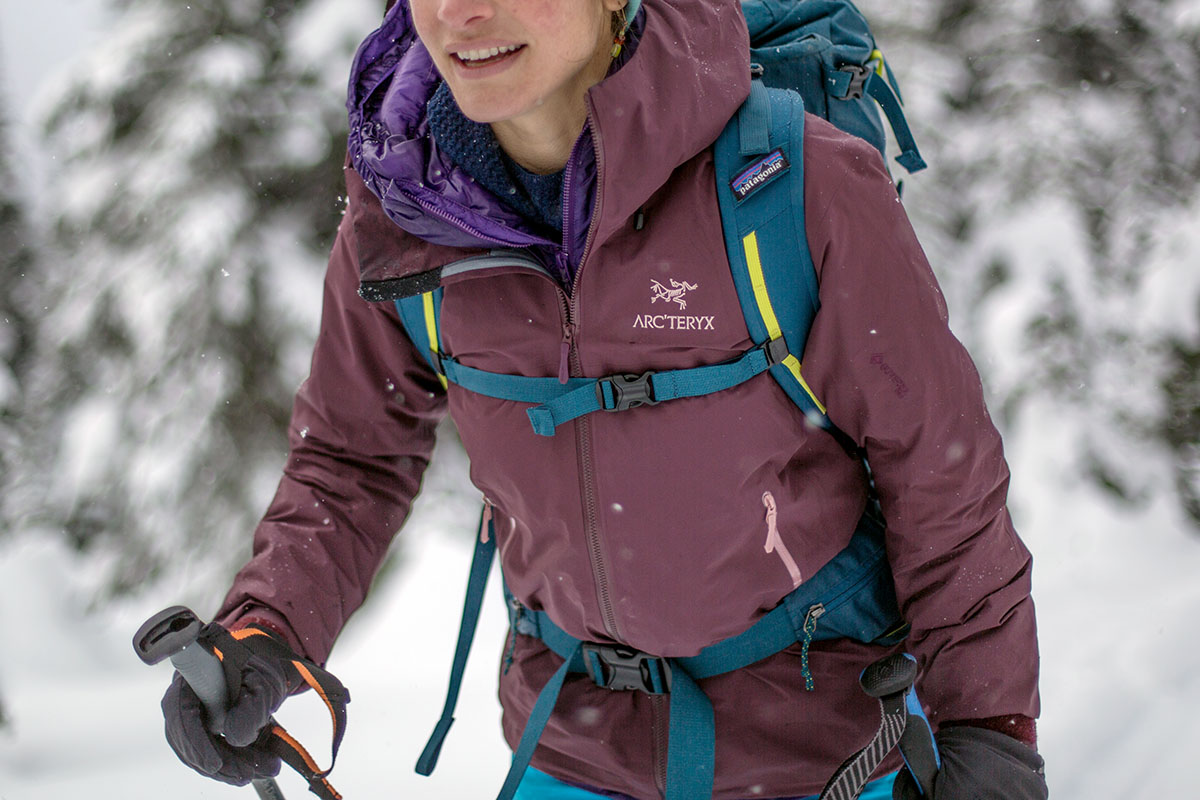
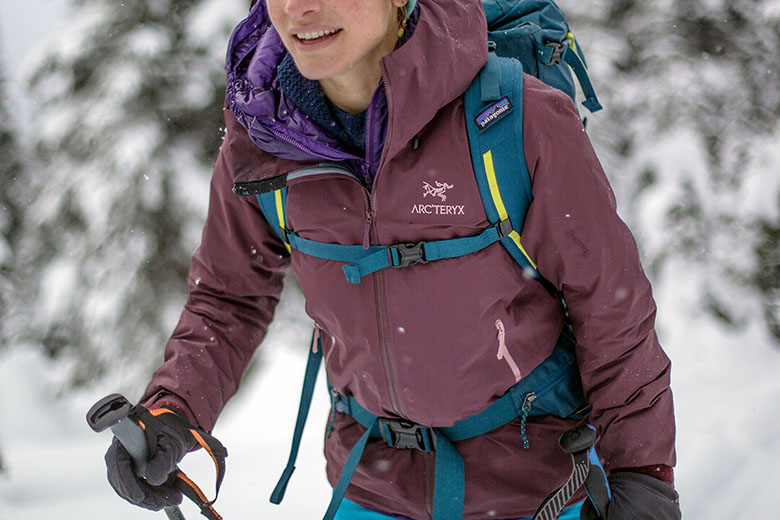
Price: $549
Weight: 11.1 oz. (women’s small)
Waterproofing: Gore-Tex Pro
Denier: 40D
What we like: Premium Gore-Tex Pro protection in a lightweight and breathable design.
What we don’t: Thin build compromises durability and weather protection compared to burlier hardshells.
See the Women's Arc'teryx Beta FL See the Men's Arc'teryx Beta FL
We consistently turn to Arc’teryx for premium and protective hardshell jackets, and their new-for-2020 Beta FL is yet another stellar entry. Built with bombproof Gore-Tex Pro 2.0, it slides into the Beta collection—Arc’teryx’s designation for versatile, mountain-ready shells—as a lightweight yet sturdy offering. We used the Beta FL as our backcountry skiing shell in snowy and wet early-season conditions in the Pacific Northwest and came away impressed with its combination of weatherproofing and breathability in a fairly minimalist design. To see how it stacks up to the competition, see our article on the best hardshell jackets.
Editor's note: Arc'teryx no longer carries the Beta FL, but the wider Beta collection is still going strong with many variations to choose from depending on your preferences and objectives.
For inclement mountain weather, a 3-layer hardshell has become our go-to jacket for the best mix of protection, durability, and breathability. Within this category, Arc’teryx’s new Beta FL is a capable yet minimalist offering, featuring a Gore-Tex Pro 2.0 waterproof membrane (the most premium in Gore’s lineup) and a relatively lightweight shell fabric (40D). Many hardshells have significantly thicker face fabrics (the popular Beta AR uses a combination of 40 and 80D, while the Alpha SV features 100D nylon), but the FL’s 40-denier fabric is fully serviceable for most conditions and great in terms of keeping weight low and breathability high. To top it off, you get a DWR finish, taped seams and water-tight zippers, and a helmet-compatible StormHood.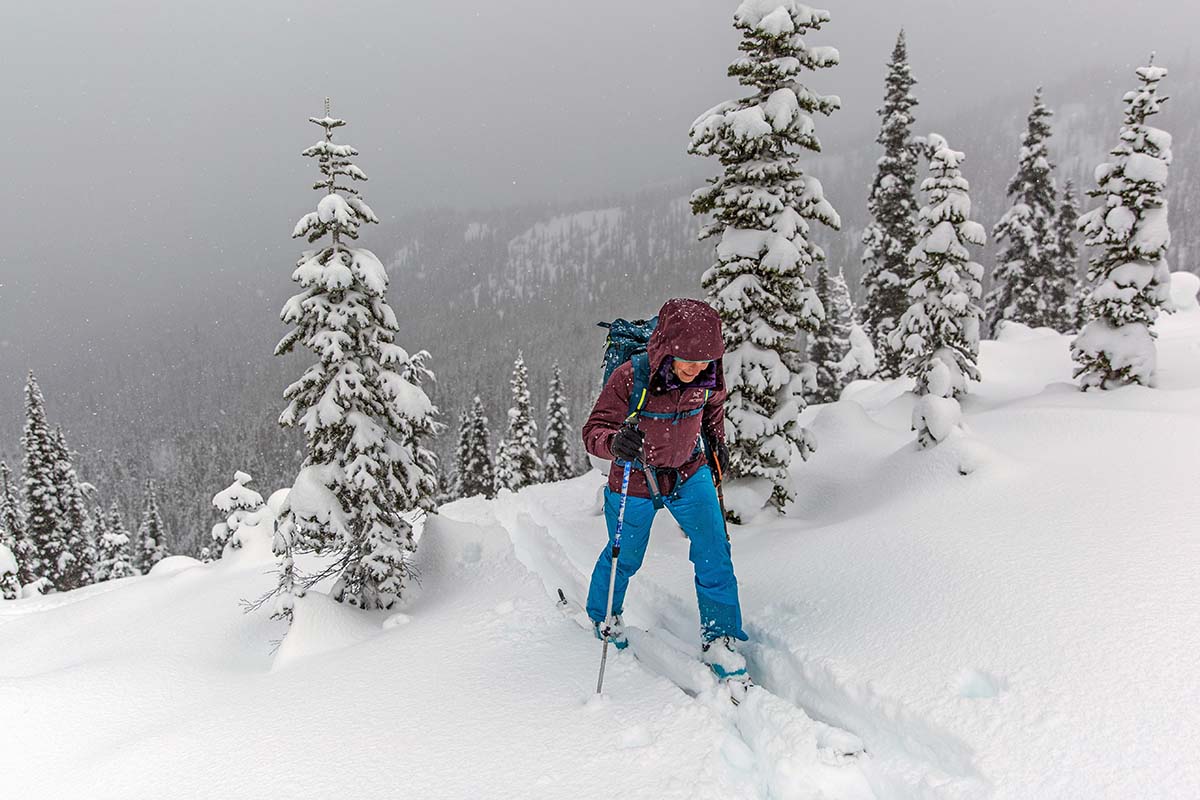
The Beta FL served as my daily driver this winter for everything from rainy PNW walks to long days of ski touring, providing a solid defense against wet weather and wind. Water consistently beaded up on the surface rather than soaking through, and the hood provided full and secure coverage even in high winds. In the end, the Beta FL is a nice balance of minimalism and protection in most conditions, although the thin build might feel slightly vulnerable in extreme alpine environments (especially compared to thicker, heavier jackets like the aforementioned Beta AR or Alpha SV).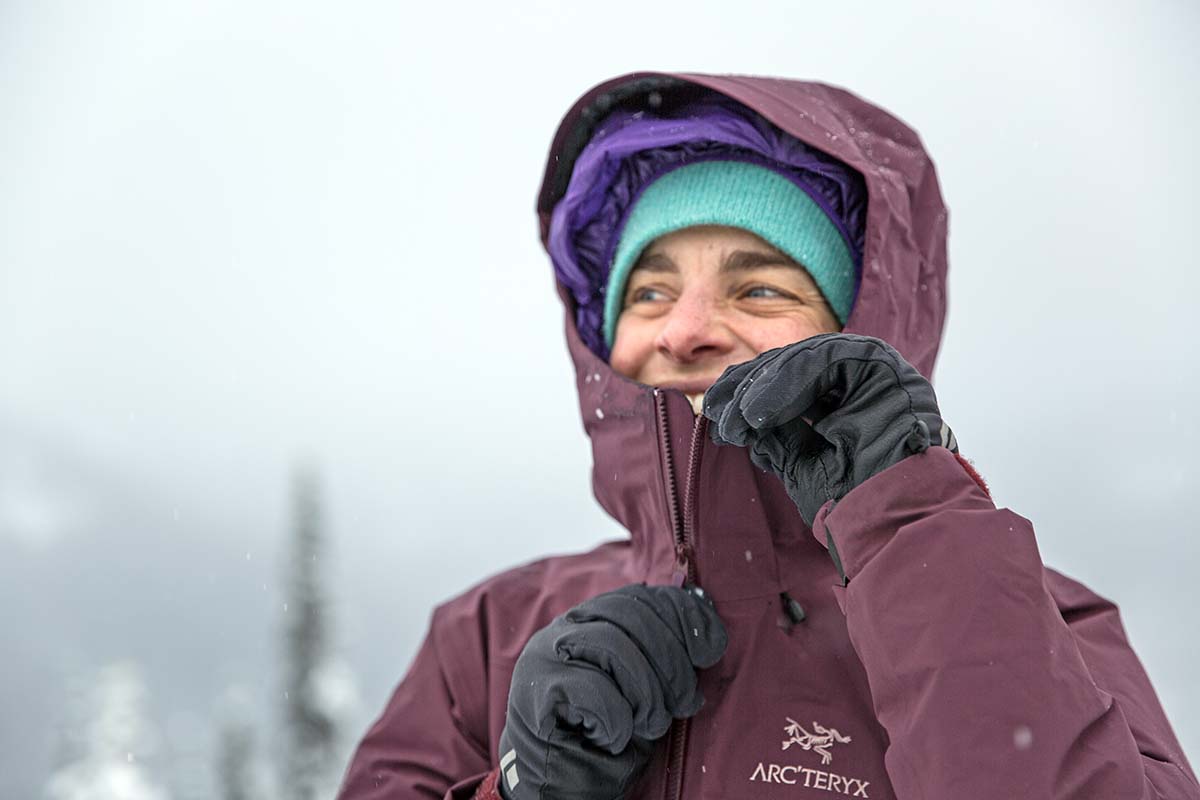
While most hardshell jackets err on the side of protection rather than breathability, the FL finds a nice middle ground with its relatively thin face fabric and Gore’s Most Breathable technology around the core and underarms. Ski touring can be a highly aerobic activity—I generally leave my hardshell in my pack while skinning (opting for a thin layer like the Black Diamond Alpine Start instead) and don it only for transitions and the downhill—but the Beta FL blew me away on my first day of testing by not sweating out during a 3,000-foot climb. Further, while I was initially skeptical about the jacket’s lack of pit zips, the FL is such an excellent breather that I haven’t found the need to dump heat (look to the Beta AR or upcoming Beta LT instead if this is a priority for you). In the end, the combination of lightweight shell fabric and Most Breathable Gore-Tex Pro make the Beta FL one of Arc’teryx’s most capable hardshells for high-output pursuits.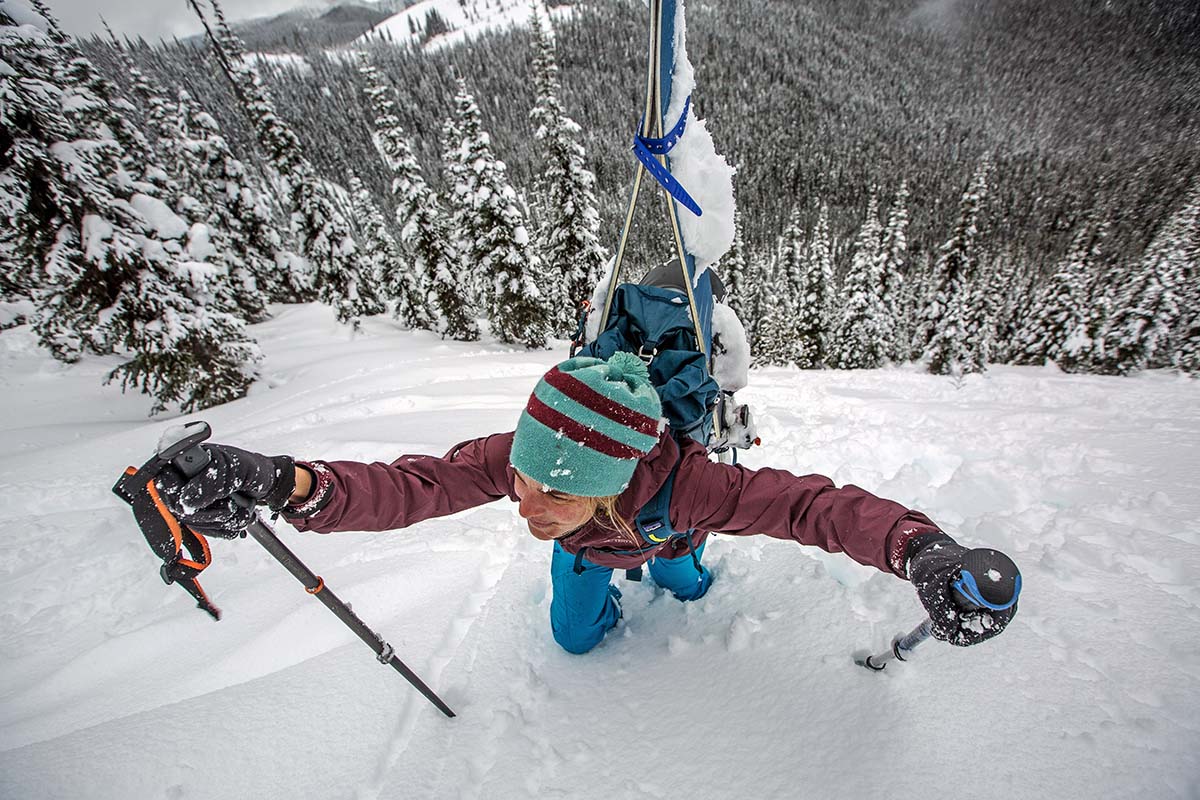
It’s hard to beat Arc’teryx’s level of quality, and the Beta FL follows suit with premium materials and top-notch construction. They’ve taken their time with every detail, from streamlined hood and hem adjustments and a microsuede chin guard to a precise 1.6-millimeter seam allowance. The jacket also features a combination of Gore-Tex’s Most Rugged and Most Breathable technologies, so you get added durability in high-wear areas (including the shoulders, outer sleeves, and hood) and an emphasis on breathability where it counts. And while the Beta FL’s 40-denier fabric is relatively thin for a hardshell, it’s held up well despite being worn under a ski pack and stuffed away beside sharp objects like a shovel and probe. 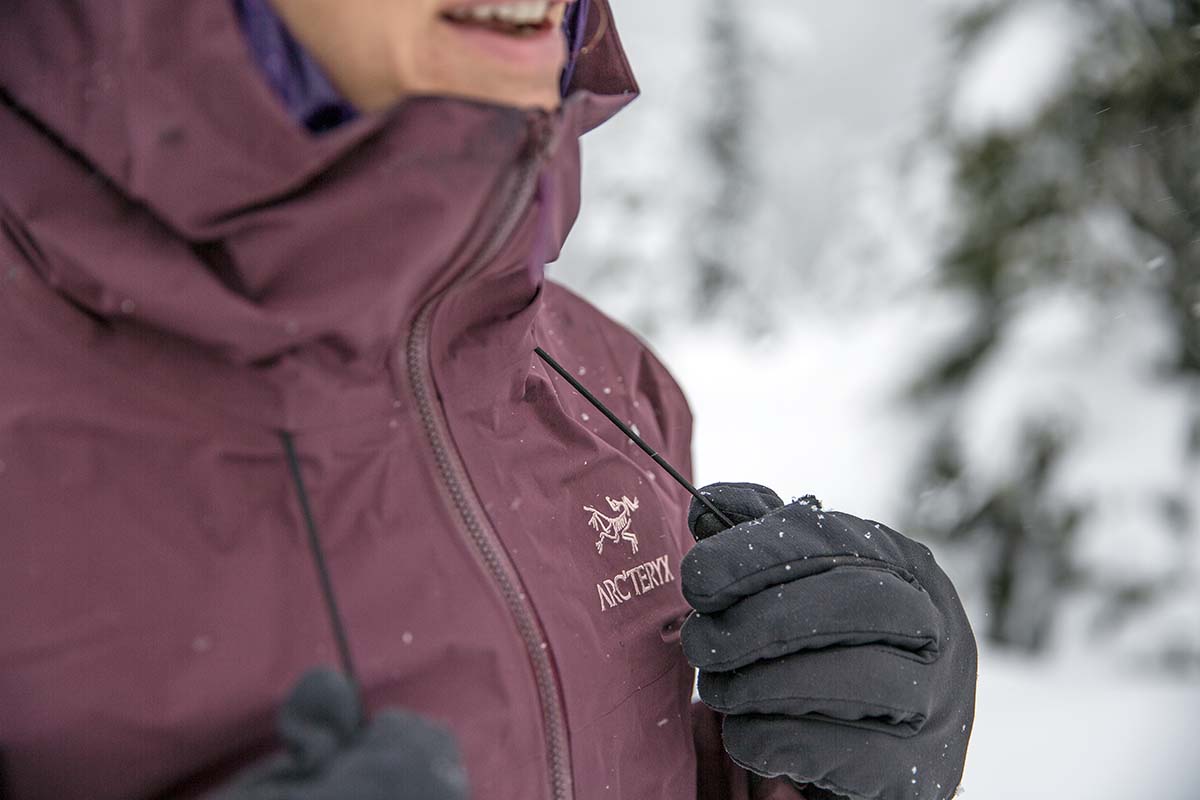
The Beta FL clocks in at 11.1 ounces for a women’s small (12.7 oz. for the men’s), which puts it on the lighter end of the spectrum in terms of hardshell jackets. For comparison’s sake, the Patagonia Pluma (which also uses Gore-Tex Pro and a 40D shell fabric) tips the scales at 12.9 ounces, and the versatile Beta AR (featuring a combination of 40 and 80D fabrics) is significantly heavier at 14.5 ounces. You can go even lighter with a jacket like the Beta SL Hybrid (10.6 oz.) but will give up the bombproof protection of Gore-Tex Pro (the SL Hybrid uses standard Gore-Tex with C-KNIT and 2-layer Paclite Plus technologies). In the end, the Beta FL truly stands out with its lightweight yet uncompromised design. In terms of packability, Arc’teryx did not include a stuff sack or stuff pocket, but the FL compresses nicely into its own hood and can be cinched down to about the size of a 32-ounce Nalgene. 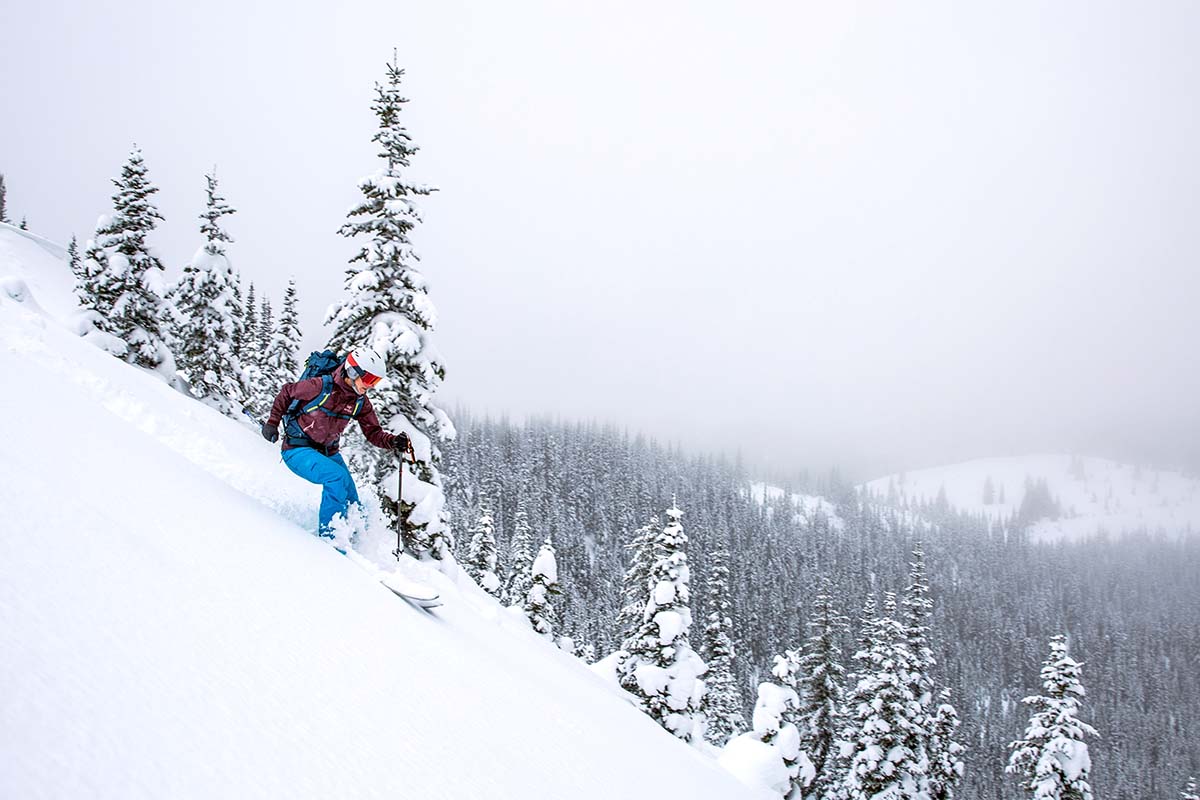
No hardshell is complete without a functional hood, and the Beta FL delivers with Arc’teryx’s tried-and-true StormHood. The design is helmet-compatible—easily sliding over my Giro Envi ski helmet—and easy to adjust (even with gloves on) with one cinch at the back and two at the front. Helmet-compatible hoods can often be unruly when worn without a dome bucket, but the FL’s snugs down nicely over a beanie or hat and stays put even in heavy winds, providing full coverage without getting in the way of my peripheral vision. Finally, a laminated brim keeps falling snow or rain off of my face but isn’t too stiff when it comes time to stuff the hardshell in my ski pack. We’ve tested Arc’teryx’s StormHood on a number of jackets (including the Beta SL Hybrid and Alpha SV) and have nothing but praise for the design. 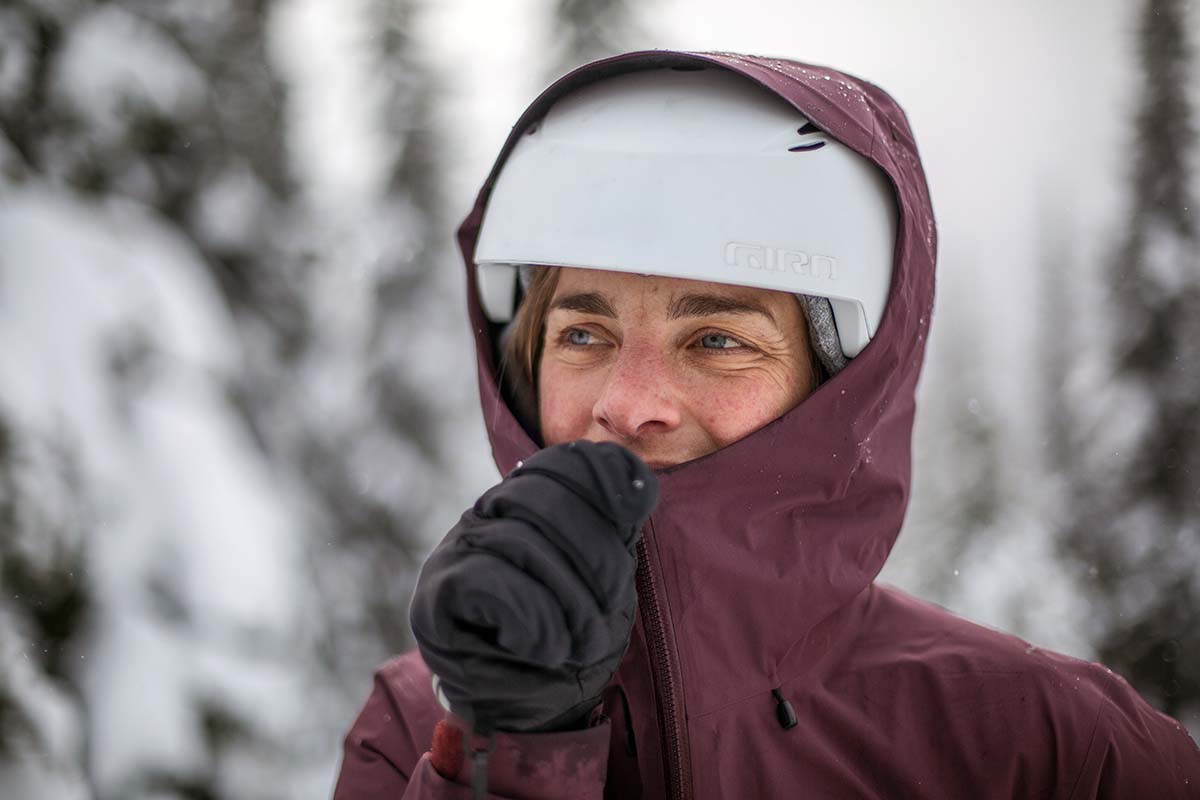
True to its intentions, the Arc'teryx Beta FL features minimal yet functional storage, with two generously sized hand pockets and an internal chest pocket. The hand pockets fall just slightly above my backpack’s hipbelt—allowing me to access most of the contents without unbuckling the strap—and extend up and down the chest panel a full 15 inches to accommodate items like a 2-way radio, goggles, and even skins (the zipper opening is 7 in. long). Jackets in Arc’teryx’s Alpha series move the pockets higher up the chest for better access while wearing a backpack or harness, but we think the Beta’s configuration finds a nice middle ground between technical and everyday use. Rounding out the FL’s storage, the chest pocket is sized to fit a modern smartphone (our iPhone 11 with case fits perfectly) and is finished with a soft and stretchy material that’s great for electronics. 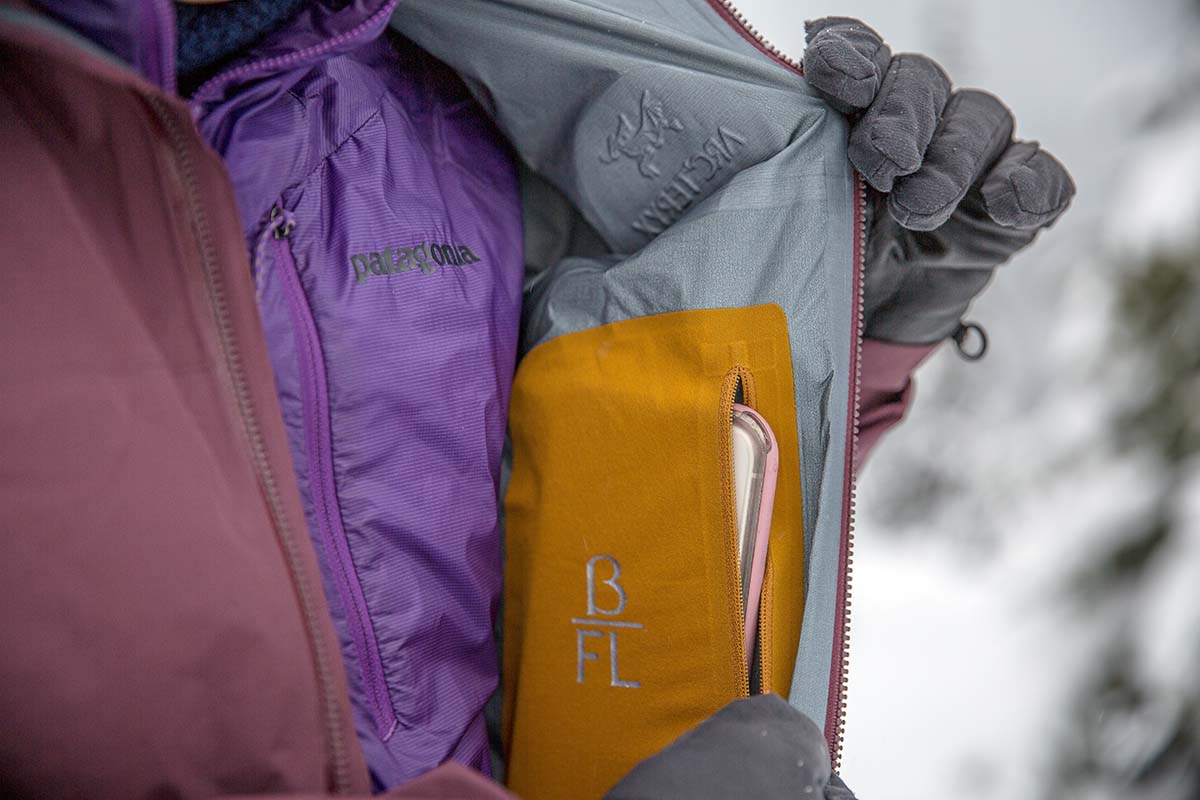
As we’ve come to expect from Arc’teryx, the Beta FL features premium tailoring and a great fit that allows for freedom of movement without feeling bulky or oversized. The sizing allows ample room for a midlayer (my favorite this winter is the Patagonia DAS Light Hoody) but functions just as well over a baselayer, too. A drop-tail hem provides excellent coverage—I’ve found this especially nice when bending over to adjust my ski boots or rip my skins—and skillful patterning and gusseted underarms keep it in place when I’m reaching to adjust my hood or grabbing skis from my rooftop box. Finally, a drawcord at the hem and Velcro cuffs allow you to dial in the fit even further—and both are easily adjustable with gloves on. 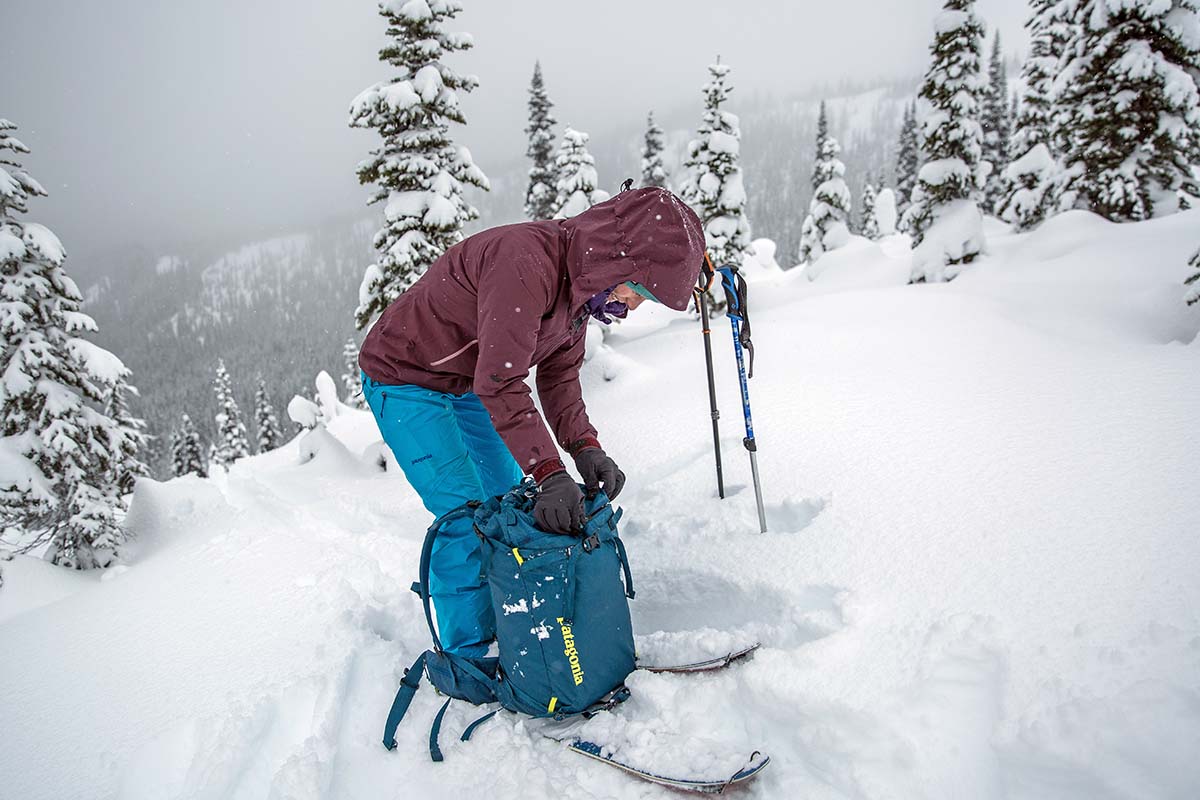
In terms of sizing, the Beta FL is classified as a “trim fit” by Arc’teryx, but I’ve found it to be surprisingly roomy and generously sized, especially in comparison to other trim-fitting models I’ve worn like the now-discontinued Alpha SL. For comparison’s sake, the jacket’s center back length of 27.2 inches is identical to the Beta AR (which is given a “regular fit” designation), and measured against its predecessor (the old Beta LT), the FL is roomier in the chest, waist, and hem. All told, I really like the fit and appreciate the extra room for layering on cold days, but Arc’teryx could have shaved off a few tenths of ounces by going with a more streamlined design—and some might want to size down to achieve this same result.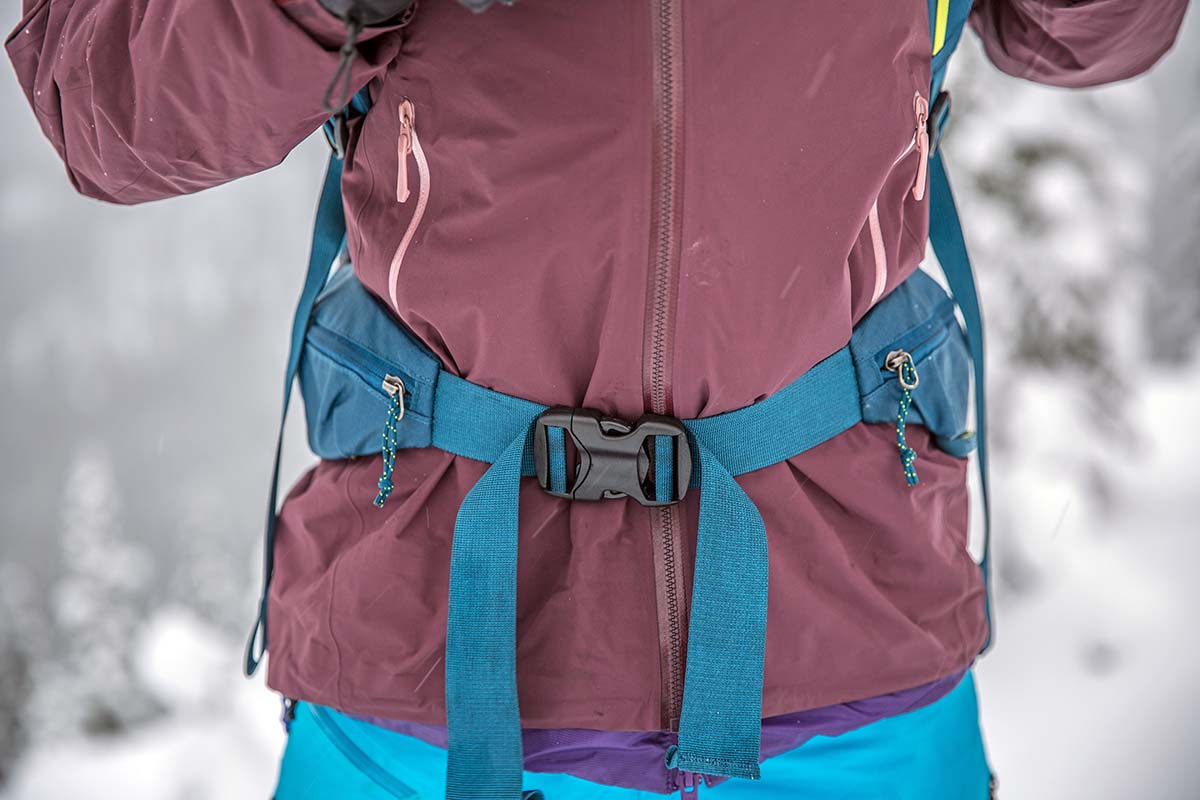
In recent years, many companies in the outdoor industry have started paying more attention to the social and environmental ramifications of their production practices. In the case of the Beta FL, Arc’teryx uses materials that meet bluesign criteria, which ensures that workers and the environment were treated fairly and sustainably throughout their manufacturing process. Further, the fabric on the kingfisher (navy blue) colorway is dope dyed, a technique that saves water and reduces carbon emissions—and results in more color-fast material. Finally, one of the most sustainable things you can do is buy less, and Arc’teryx’s emphasis on quality ensures that the Beta FL is built to last throughout multiple seasons of heavy use.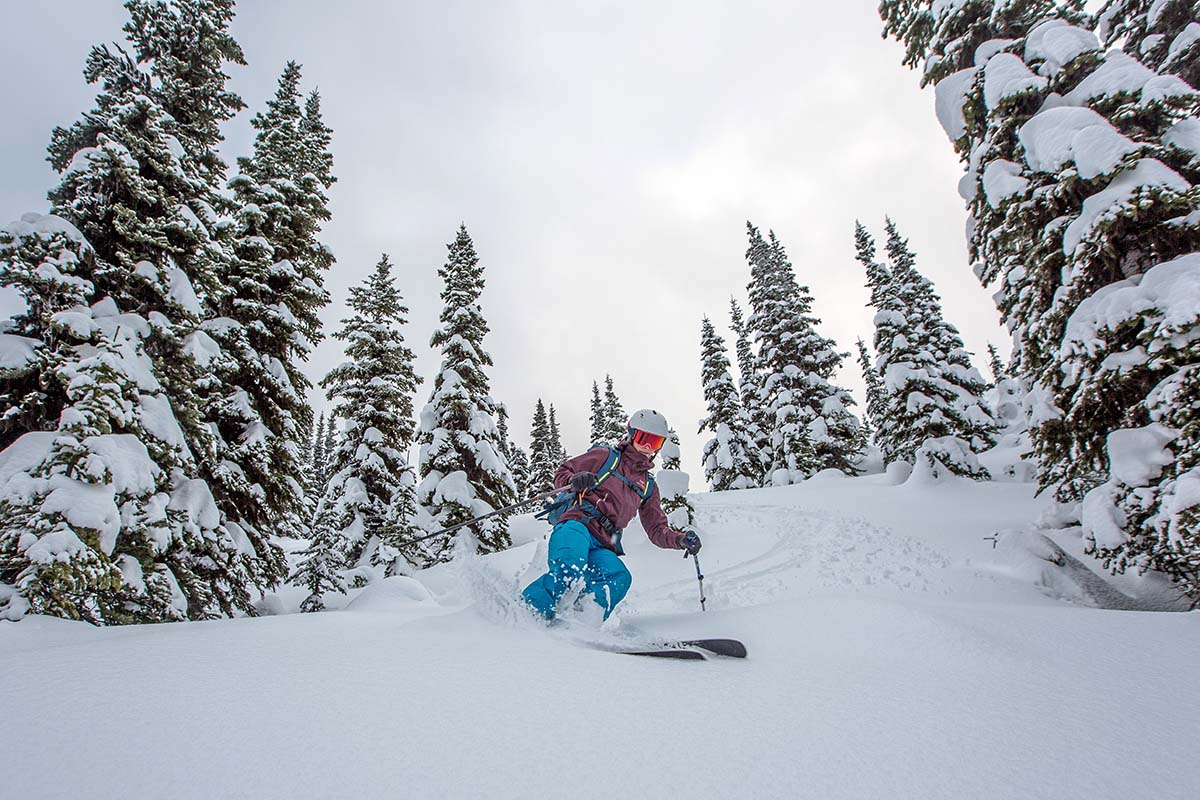
We tested the women’s Beta FL for this review, but the jacket also comes in a men’s version. The men’s Beta FL also retails for $549 and is identical to the women’s jacket in materials and feature set, but it comes in five different colorways and a men’s-specific cut. The men’s Beta FL clocks in at 12.7 ounces and has a 30-inch center back length. Within the Beta collection, Arc’teryx also makes the versatile Beta AR, extra protective Beta SV, and the ultralight and packable Beta SL Hybrid. 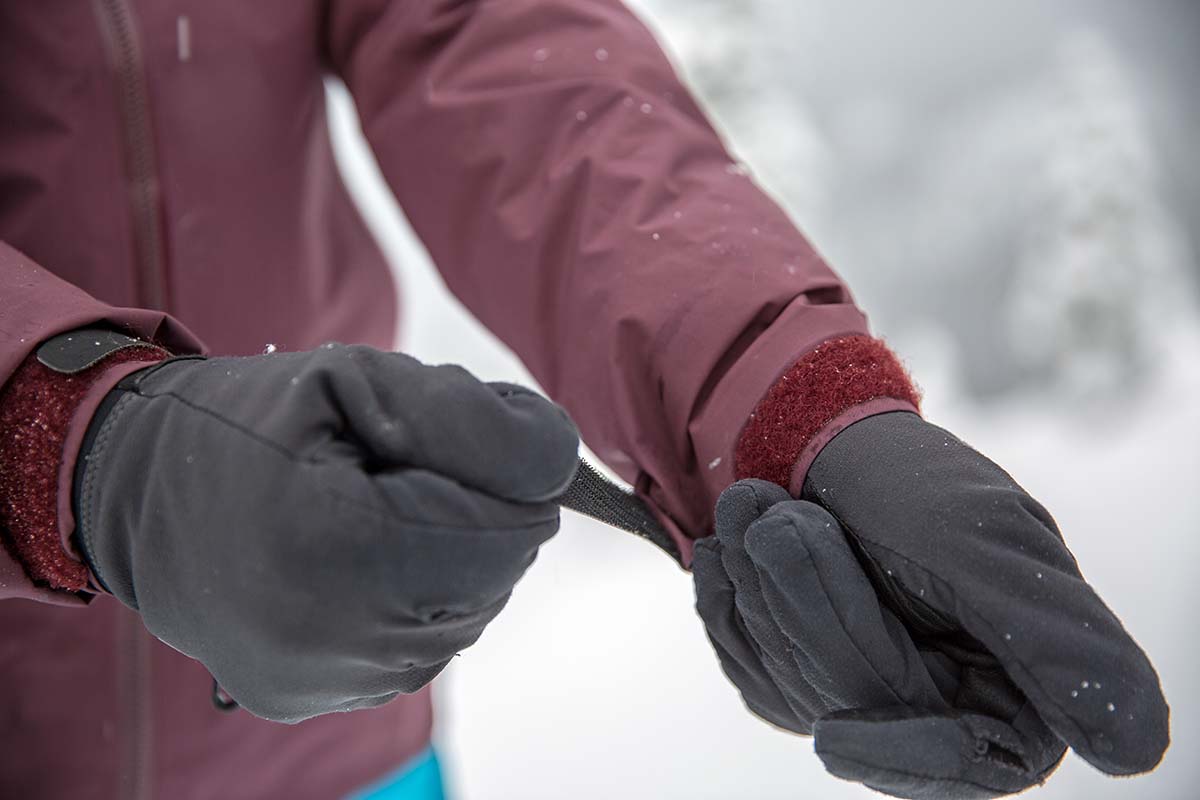
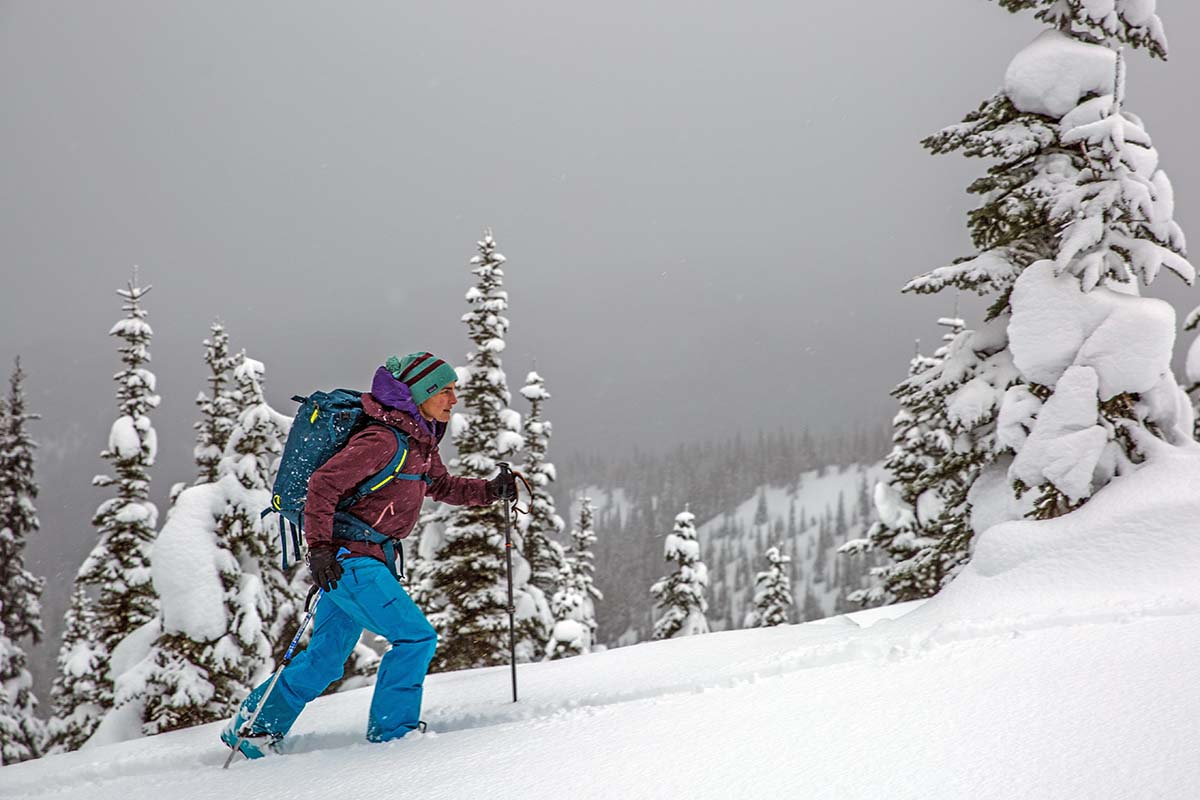
| Jacket | Price | Weight | Waterproofing | Denier | Pit Zips | Pockets |
|---|---|---|---|---|---|---|
| Arc'teryx Beta FL | $549 | 11.1 oz. | 3L Gore-Tex Pro | 40D | No | 3 |
| Arc'teryx Beta AR | $599 | 14.5 oz. | 3L Gore-Tex Pro | 40D x 80D | Yes | 3 |
| Arc'teryx Beta SL Hybrid | $425 | 10.6 oz. | 2L & 3L Gore-Tex | 42D x 40D | Yes | 2 |
| Patagonia Pluma | $549 | 12.9 oz. | 3L Gore-Tex Pro | 40D | Yes | 4 |
| Patagonia Ascensionist | $499 | 11.4 oz. | 3L Gore-Tex Active | 30D | Yes | 4 |
| Black Diamond Highline Stretch | $299 | 10.7 oz. | 3L BD.dry | Unavailable | Yes | 3 |
Those in the market for a premium hardshell jacket will find no shortage of options. The Beta FL’s primary competition comes from within Arc’teryx’s own lineup, starting with the Beta AR. For $50 more, the Beta AR is the more well-rounded choice, with less emphasis on shaving weight (the women’s model clocks in at 14.5 oz.) and more priority placed on features (pit zips are included), durability, and weather protection. You get the beefed-up Most Rugged variation of the Gore-Tex Pro waterproof membrane throughout, 80-denier nylon in high-wear and high-exposure areas, and Arc’teryx’s DropHood (which includes a built-in collar). The Beta AR has been our top-rated hardshell for years running and is the better choice for all-around mountaineering and true bad weather, but minimalist skiers and backpackers would do best to stick with the lighter and more breathable Beta FL.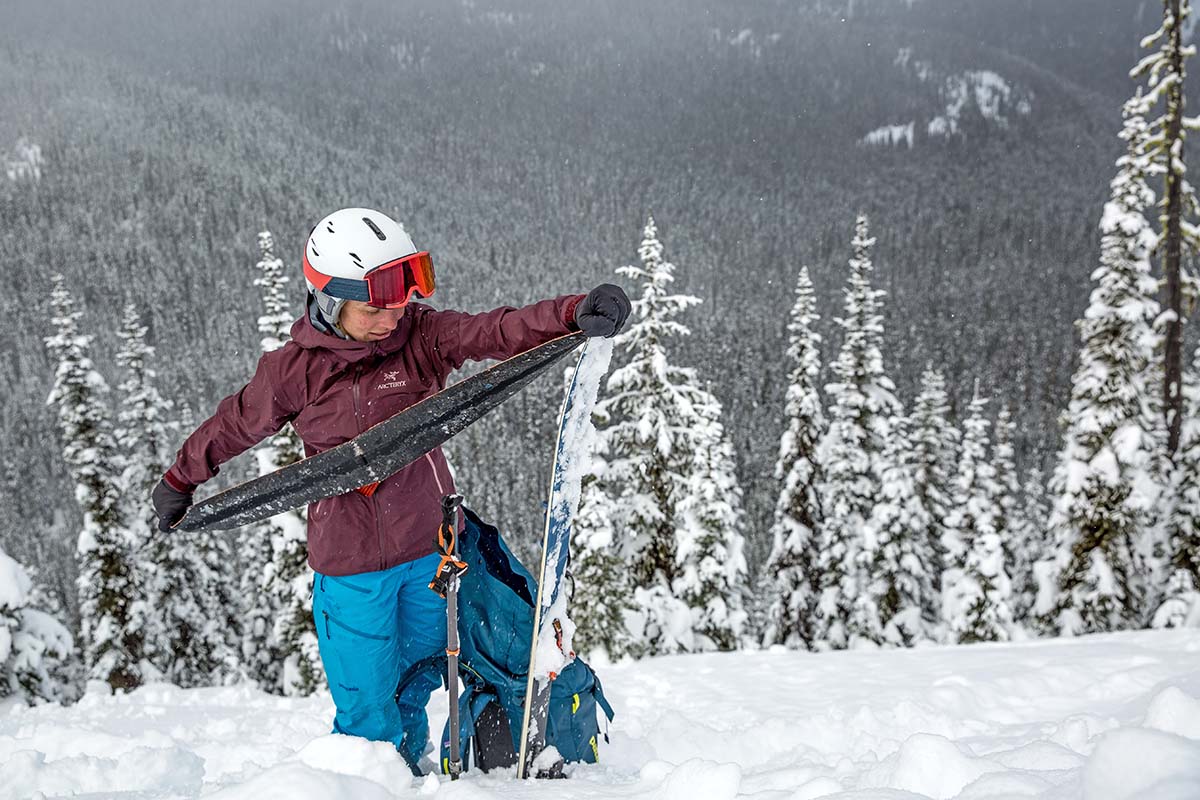
Sliding in as the lightest jacket in the Beta lineup is the SL Hybrid, which uses a combination of standard 3-layer Gore-Tex with a C-Knit backer and 2-layer Paclite Plus to keep weight low and packability high. This is a true minimalist jacket, with just two pockets, slightly compromised weather protection and durability (2-layer builds just can’t compete with 3-layer), and a lower price point ($425) as well. But unlike the Beta FL you do get pit zips, and the two jackets share a number of important features, such as a helmet-compatible StormHood, WaterTight zippers, Velcro cuffs, and an adjustable hem. In the end, the Beta SL Hybrid is a wonderful piece for summer and shoulder seasons (for more, see our SL Hybrid review), but the Beta FL is the better crossover jacket for winter use.
Venturing outside of Arc’teryx’s collection, Patagonia is another great place to look for a weight-conscious yet alpine-ready hardshell jacket. The Pluma—also priced at $549—is their premium Gore-Tex Pro offering, clocking in at 12.9 ounces and featuring a similar 40-denier shell. In our testing, the Pluma’s hood unfortunately proved too small to comfortably fit a ski helmet (it’s sized for a climbing helmet), but the hardshell is a strong competitor overall and you do get pit zips, which could be the clincher for some. In the end, we’ll stick with the more minimalist Beta FL for lightweight mountaineering and ski touring, but it’s hard to go wrong with the Patagonia Pluma—and it does get the sustainable edge with Fair Trade certification and the use of recycled materials.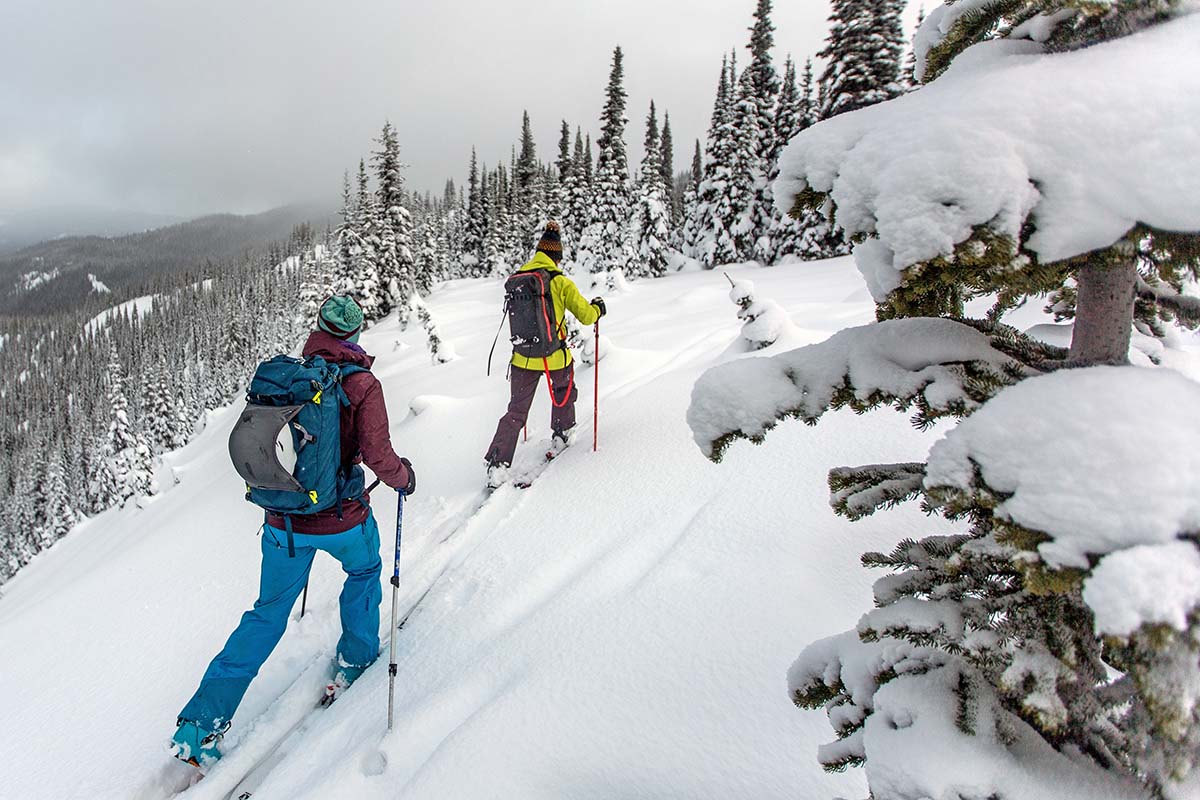
Fast-and-light enthusiasts will also want to take a look at the Ascensionist, Patagonia’s minimalist hardshell designed for active pursuits. The Ascensionist pairs a 3-layer Gore-Tex Active membrane with thin 30-denier shell fabric and pit zips, resulting in a jacket that’s designed to dump heat during hard efforts like skinning and bootpacking uphill (even more so than the Beta FL). At just 11.4 ounces the Ascensionist is on par with the FL in terms of weight, but Gore-Tex’s Active simply can’t match the bombproof protection and durability of their premium Pro membrane. We’d consider the Patagonia Ascensionist for spring mountaineering or rainy summer hiking, but will be sticking with the Beta FL for winter activities.
Finally, Black Diamond offers a growing assortment of technical clothing, and the 3-layer Highline Stretch is an intriguing option. Clocking in over a half-ounce less than the Beta FL (10.7 oz.) and retailing for almost half the cost ($299), the Highline Stretch is an entry-level hardshell for those with fast-and-light intentions. A stretchy shell and pit zips provide great freedom of movement and breathability for high-output pursuits, and we’re big fans of BD’s environmentally friendly durable water repellant (DWR) finish, which is free of harmful chemicals but also incredibly long-lasting (no need to refresh with a spray or wash-in treatment). But held up against Gore-Tex’s premium Pro, the Highline Stretch’s in-house BD.dry membrane isn’t as durable or protective, and the jacket lacks technical chops with non-hipbelt-compatible hand pockets and less of a performance fit. Serious mountain goers will want to stick with offerings from Arc’teryx and Patagonia, but the budget-priced Highline Stretch offers ample protection for most casual activities.